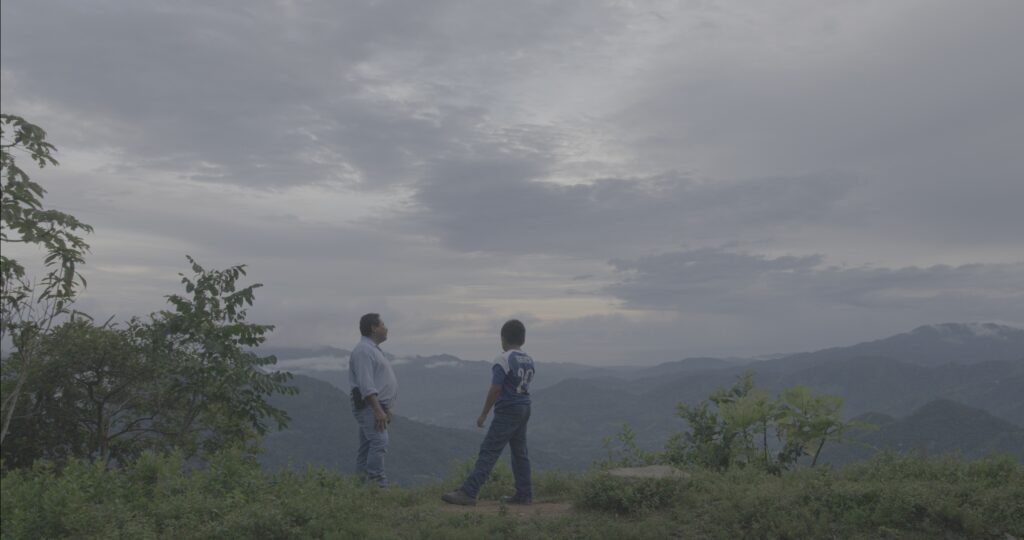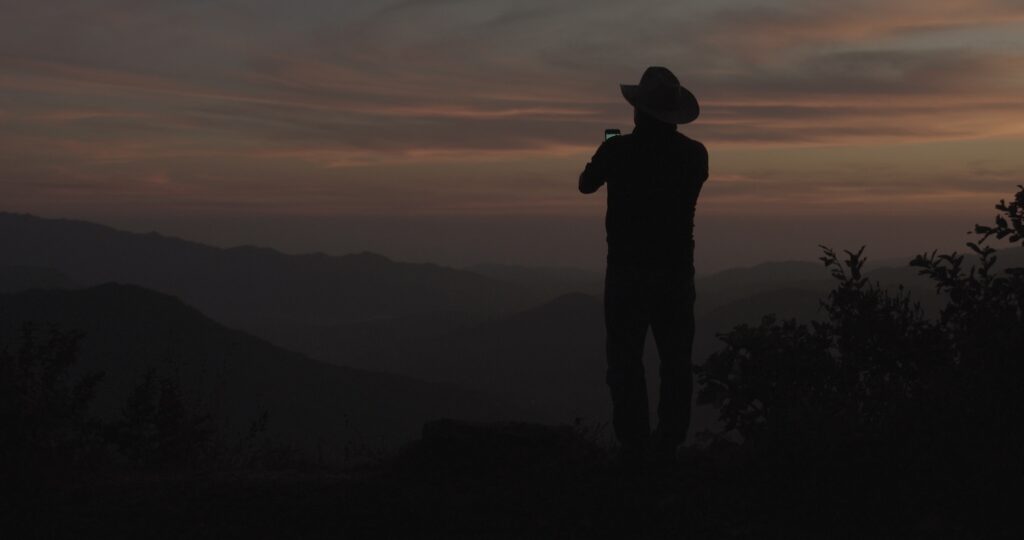Fejos Postdoctoral Fellow: Gerónimo Barrera de la Torre
MDC_Trailer_0624 from Gerónimo Barrera on Vimeo.
Our film, Xa Lyu K’yaq (A World of Mountains), filmed over the last seven years, shines a spotlight on the significant impact of carbon offsetting programs in rural and indigenous communities in Mexico. Among these, the forestry programs, in the last few years, have grown from less than ten to more than two hundred in less than five years. The film focuses on the pioneering program that linked community-managed forests in San Juan Lachao (SJL), Oaxaca, Mexico, and international carbon markets, particularly the California market. Carbon arrived at SJL, an Indigenous Chatino and campesino community, as a new resource and part of a series of forest conservation programs led by the community in partnership with an environmental NGO. We documented the community’s efforts to conserve their forest and their negotiations to implement these climate change mitigation measures. Over the years, SJL became a regional reference among forestry communities in Oaxaca through the implementation of these conservation programs. The film follows Gaspar Salinas, the principal character, who is part of the local authority and is deeply involved in the protection of the forest. However, it also delves into the challenges that forest conservation poses for local knowledges and uses of the land, as well as the rapid changes occurring in the Chatino communities.

Throughout this year, with the invaluable support of the Wenner-Gren Fejos Postdoctoral Film grant, our collective efforts were focused on three key areas: completing the production phase, organizing screenings and gathering feedback from participants and the community, and finally, editing a rough cut of the film. This comprehensive approach allowed us to ensure the film’s quality and relevance and incorporate the community’s perspectives and insights into the postproduction process. With the newly edited and filmed materials, we applied for different grants and successfully raised money for the next postproduction phases.

We have been working closely with Gaspar Salinas, his family, and the community over the years, and during the summer of 2023, we filmed several scenes focusing on how he perceived the changes in community organization, communal land, and forestry conservation over the years. He discussed his expectations for the new community projects and the issues that carbon programs brought to the community organization, particularly the use of monetary resources. We filmed him in conversation with former local authorities who were part of the first efforts to organize the offsetting program in SJL and reflect on the extraordinary growth of the carbon market in Oaxaca and the role of SJL in this market. The Mexican protocol for forestry carbon was developed first in SJL by Climate Action Reserve following the California model and is now being used in many different communities across the country.
Over this year, we began the editing process and worked closely with local authorities involved in the conservation programs to screen edited scenes for the community and those involved in the film. In the summer of 2022, we screened a 20-minute edited video in Rancho Nuevo, one of the communities of SJL that has been vocal in reorganizing forestry programs for the benefit of all communities. We showcase various aspects of the film, especially those related to community activities such as the annual festivities in March and Christmas. However, we were interested in discussing further the idea of documentary filming and the postproduction process. To expand on this topic, we screened another documentary, Tío Yim: Tras los pasos de Jaime Martínez Luna (Luna Marán, 2021), that tells the story of a community leader in Guelatao de Juarez, a forestry community in Oaxaca, involved in the struggles for autonomy and communal forestry. I chose this film to highlight the shared struggles against forest exploitation during the 1970s and 1980s by a parastatal company. The same company extracted wood in SJL and the Chatino region around the same time, with acute environmental and social consequences. This allowed us to not only discuss the shared experiences and historical contexts but also the style of documentary filming. Aside from the screening, we worked with Gaspar Salinas, exploring the possibilities and the mechanism through which the editing process is performed, thereby fostering a sense of community and collaboration.
Later, we began working with Maria Luisa Santos, the film editor, to create an initial rough cut. The editing process involved sharing the video with Gaspar Salinas and members of the community authority for their feedback. We will continue this for the next month, reviewing the newly edited materials with him, the participants, and the local authority.
The festivity in the main town, San Juan Lachao Nuevo, in January brings together community members and visitors from surrounding communities in Oaxaca to showcase unique traditions and customs, including dances and food. The municipal authority saw it as an opportunity to showcase a brief section of the film and provide a short talk about the stage of the documentary project. During the festivities in January 2024, I presented a short, edited video showcasing community forestry programs. The video highlighted forestry workers’ activities and carbon-offsetting events in the community, such as carbon credit sales, providing a glimpse of the film’s main themes. This presentation was well-received by the community and provided an excellent opportunity to reach a larger audience and engage in conversations about the documentary project.
In January 2024, we submitted this rough cut to the Programa de Fomento al Cine Mexicano (FOCINE) and started assembling our creative team, which included sound design, music, and color correction. We also worked with our producer, Abril López Carrillo (Ojo de Vaca). We found out in May that our application was successful, so we adjusted our postproduction schedule to take advantage of the new opportunities provided by the grant.
Our strategy for the rest of 2024 involves close collaboration with the editor and the film music composer to have the first cut of the film by September. For the first half of 2025, we plan to work with the sound designer and perform the THX mix, also work with the colorist film to make color adjustments, then image postproduction and subtitles (Spanish and English) between August and October. By November of this year, we will have the final cut and begin sending the film to the festival. During this period, we will collaborate with local authorities and community members who participate in the film in order to receive feedback on the different stages of the process. Gaspar will closely oversee the postproduction phase to ensure his ideas and perspectives are accurately represented.
Our objective is to promote the film, beginning with the SJL communities. We intend to collaborate with local authorities to organize the first screening by the end of 2025. Between the end of 2025 and the beginning of 2026, we will launch our impact campaign, in partnership with community members featured in the film, particularly Gaspar Salinas. Our plan is to visit forestry communities in Oaxaca, universities, and other venues in Mexico City and various parts of the country. Additionally, we will showcase the movie in the US, particularly at universities in California, Brown University, and the University of Texas at Austin. At the same time, we will present the film at different film festivals, both in Mexico and the US